
Yesterday
Dougal was once again in Heaven - he gets more and more manic with age! I, if you have noticed, get more and more decorous. (I only lose my cool when I hear a dog walking past in the road.) Anyway, it was off to a misty start with Paul (Pauline was away at a Workshop), Sue, Thea (back from Botswana), Alice (squirm and wriggle!) and our humans.

We spotted this
Spur-winged Goose up on the misty, rocky slopes of
Bokkop. They are apparently the largest geese in Africa!

All the plants were frosted with mist droplets. We
scotties were quite soaked to the skin
especially Dougal who was diving into the
fynbos with huge enthusiasm. This is a frosted Black-bearded
Protea (
Protea lepidocarpodendron).

And in Swamp Daisy Valley in a boggy, swampy spot, we came across these Water Heaths (
Erica curviflora) also looking all sugar-frosted.

Alice and Paul in the Water Heaths - this is how we Scotties are most of the time - just our heads above the plants!

The Marsh Pagodas (
Mimetes hirtus) plants were indeed flowering

and full of noisy
Cape Sugarbirds.

Alice took lots of photos of the March Pagodas
because they are quite rare and endangered and on the
Red List.

Thea spotted this funny little
Babiana ringens plant growing in the middle of the path. Its common name is
Rotstert or Rat's Tail and the odd leafless twig that looks like a rat's tail is actually a custom-made
sunbird perch! Now that is just so amazing!

The path was full of swampy bits - here is Thea contemplating taking off her shoes - with some Swamp Daisies (
Osmitopsis asteriscoides).

Now we can see why the hill is called
Bokkop - buck's head.

Tea on the slopes of
Spitskop. The humans were all very thrilled by the flowers and the views,
Dougal was thrilled by the rodent smells, and I was thrilled too but not sure why! Perhaps because there were a few other dogs that walked past. Perhaps
because Alice was here. Perhaps because there were rocks to climb. Perhaps
because there were rusks for tea. Perhaps...

because the Food Lady was having fun taking photos of flowers, like this
Featherhead (
Phylica pubescens) bush.

Perhaps because I got to walk with the Alpha Male ahead of the pack, through
beautiful flowers - like these sweet-smelling sweet-pea bushes or
keurtjies (
Podalyria calyptrata) that like to grow in ravines and marshy places.

This is a bud of the sweet pea bush that gives its specific name to the whole plant. The bracts fuse to form a hood-like cover (
calyptra in Latin) over the bud that breaks away as the bud swells - hence the name
calyptrata. (Not sure if my Scottie brain understands all that but maybe some humans can!)

All good things come to an end, and although we Scots are looking tired and thirsty here, there were lots and lots of mountain streams to wade in and drink out of, so we were certainly not short of water. We were just a wee bit warm, but very, very happy!
 Yesterday Dougal was once again in Heaven - he gets more and more manic with age! I, if you have noticed, get more and more decorous. (I only lose my cool when I hear a dog walking past in the road.) Anyway, it was off to a misty start with Paul (Pauline was away at a Workshop), Sue, Thea (back from Botswana), Alice (squirm and wriggle!) and our humans.
Yesterday Dougal was once again in Heaven - he gets more and more manic with age! I, if you have noticed, get more and more decorous. (I only lose my cool when I hear a dog walking past in the road.) Anyway, it was off to a misty start with Paul (Pauline was away at a Workshop), Sue, Thea (back from Botswana), Alice (squirm and wriggle!) and our humans. We spotted this Spur-winged Goose up on the misty, rocky slopes of Bokkop. They are apparently the largest geese in Africa!
We spotted this Spur-winged Goose up on the misty, rocky slopes of Bokkop. They are apparently the largest geese in Africa! All the plants were frosted with mist droplets. We scotties were quite soaked to the skin especially Dougal who was diving into the fynbos with huge enthusiasm. This is a frosted Black-bearded Protea (Protea lepidocarpodendron).
All the plants were frosted with mist droplets. We scotties were quite soaked to the skin especially Dougal who was diving into the fynbos with huge enthusiasm. This is a frosted Black-bearded Protea (Protea lepidocarpodendron). And in Swamp Daisy Valley in a boggy, swampy spot, we came across these Water Heaths (Erica curviflora) also looking all sugar-frosted.
And in Swamp Daisy Valley in a boggy, swampy spot, we came across these Water Heaths (Erica curviflora) also looking all sugar-frosted. Alice and Paul in the Water Heaths - this is how we Scotties are most of the time - just our heads above the plants!
Alice and Paul in the Water Heaths - this is how we Scotties are most of the time - just our heads above the plants!  The Marsh Pagodas (Mimetes hirtus) plants were indeed flowering
The Marsh Pagodas (Mimetes hirtus) plants were indeed flowering  and full of noisy Cape Sugarbirds.
and full of noisy Cape Sugarbirds. Alice took lots of photos of the March Pagodas because they are quite rare and endangered and on the Red List.
Alice took lots of photos of the March Pagodas because they are quite rare and endangered and on the Red List. Thea spotted this funny little Babiana ringens plant growing in the middle of the path. Its common name is Rotstert or Rat's Tail and the odd leafless twig that looks like a rat's tail is actually a custom-made sunbird perch! Now that is just so amazing!
Thea spotted this funny little Babiana ringens plant growing in the middle of the path. Its common name is Rotstert or Rat's Tail and the odd leafless twig that looks like a rat's tail is actually a custom-made sunbird perch! Now that is just so amazing! The path was full of swampy bits - here is Thea contemplating taking off her shoes - with some Swamp Daisies (Osmitopsis asteriscoides).
The path was full of swampy bits - here is Thea contemplating taking off her shoes - with some Swamp Daisies (Osmitopsis asteriscoides). Now we can see why the hill is called Bokkop - buck's head.
Now we can see why the hill is called Bokkop - buck's head. Tea on the slopes of Spitskop. The humans were all very thrilled by the flowers and the views, Dougal was thrilled by the rodent smells, and I was thrilled too but not sure why! Perhaps because there were a few other dogs that walked past. Perhaps because Alice was here. Perhaps because there were rocks to climb. Perhaps because there were rusks for tea. Perhaps...
Tea on the slopes of Spitskop. The humans were all very thrilled by the flowers and the views, Dougal was thrilled by the rodent smells, and I was thrilled too but not sure why! Perhaps because there were a few other dogs that walked past. Perhaps because Alice was here. Perhaps because there were rocks to climb. Perhaps because there were rusks for tea. Perhaps... because the Food Lady was having fun taking photos of flowers, like this Featherhead (Phylica pubescens) bush.
because the Food Lady was having fun taking photos of flowers, like this Featherhead (Phylica pubescens) bush. Perhaps because I got to walk with the Alpha Male ahead of the pack, through beautiful flowers - like these sweet-smelling sweet-pea bushes or keurtjies (Podalyria calyptrata) that like to grow in ravines and marshy places.
Perhaps because I got to walk with the Alpha Male ahead of the pack, through beautiful flowers - like these sweet-smelling sweet-pea bushes or keurtjies (Podalyria calyptrata) that like to grow in ravines and marshy places.  This is a bud of the sweet pea bush that gives its specific name to the whole plant. The bracts fuse to form a hood-like cover (calyptra in Latin) over the bud that breaks away as the bud swells - hence the name calyptrata. (Not sure if my Scottie brain understands all that but maybe some humans can!)
This is a bud of the sweet pea bush that gives its specific name to the whole plant. The bracts fuse to form a hood-like cover (calyptra in Latin) over the bud that breaks away as the bud swells - hence the name calyptrata. (Not sure if my Scottie brain understands all that but maybe some humans can!)


























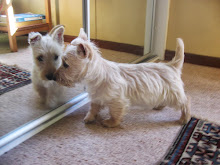


















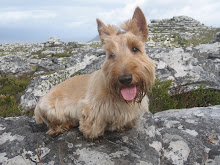
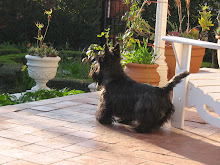






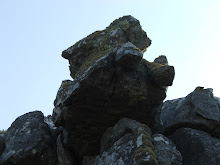





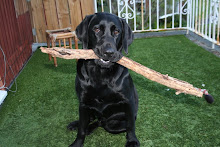





















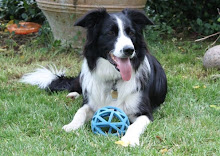

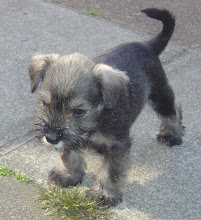













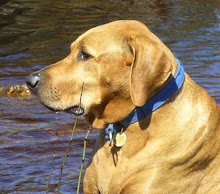
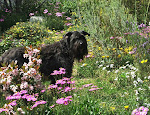



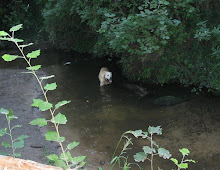



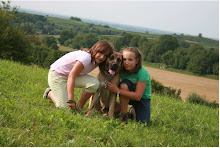

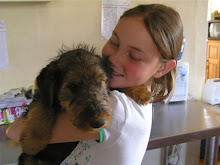








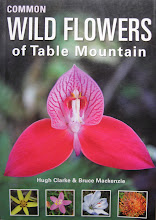


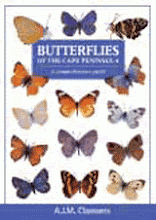






No comments:
Post a Comment